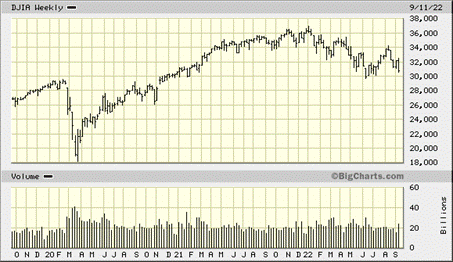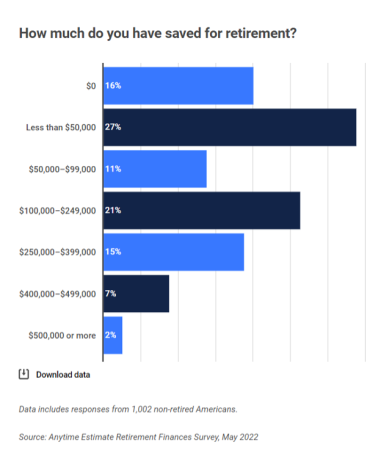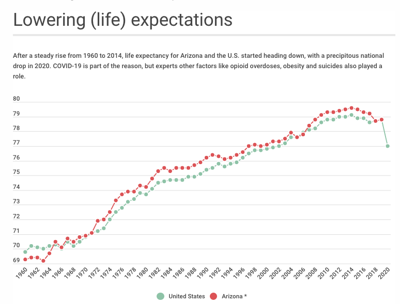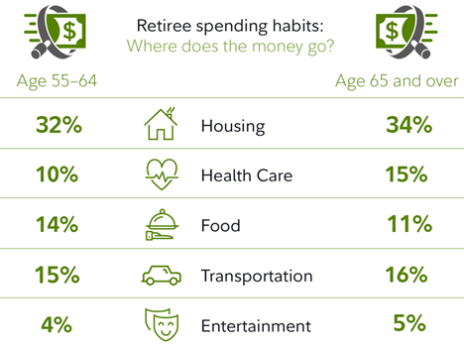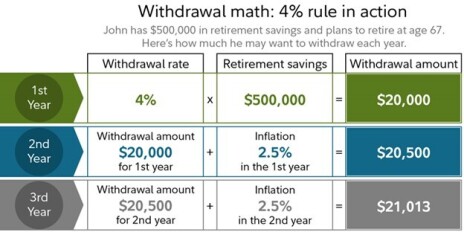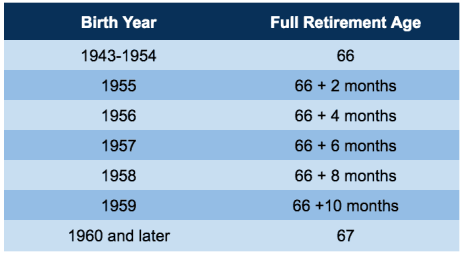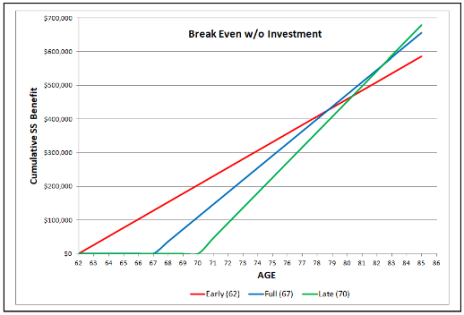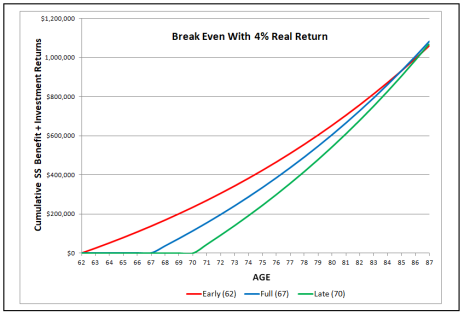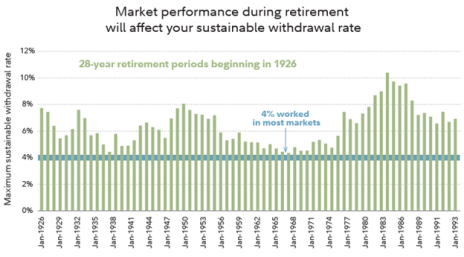I have a friend who just turned 65 this past summer. He’s a Realtor and he’s been talking to me about retiring for a couple of years. Last fall, he had just about made up his mind to retire around his birthday.
Since COVID, he has ridden the stock market wave to a near-tripling of his portfolio. However, with the stock market volatility since the beginning of 2022, he is rethinking his retirement goal, as he’s seen some major erosion in his portfolio.
I bet you may be thinking the same way. Retirement is a huge decision, especially if you are giving up a job that comes with a healthy income. It’s perfectly normal to be worried about it. The top two concerns for most folks are 1) Wondering if you have saved enough money, and 2) How much you can comfortably withdraw each year while maintaining your normal activities and lifestyle? That’s called the sustainable withdrawal rate—the estimated percentage you can withdraw from your savings each year without running out of money.
To answer the first question, current thinking is that most people will need $1-$1.5 million to securely retire, or about 12 times your retirement salary. I found that number to be very depressing, especially when I read a survey from Fidelity. The report found that “The median amount Americans have saved for retirement is just $71,500. Baby boomers have $112,000 — only 39% of the $286,400 that they should have in the bank by age 60.” The following graph depicts this sad state of affairs.
https://infogram.com/retirement-savings-1hd12yx7ppnrw6k
As for the second concern, for many years, it has been the standard for financial advisers to estimate that retirees can safely withdraw about 4% each year to fund their retirement.
But that 4% was calculated back when people like my grandparents considered retirement to be the years after you stopped working and to put it bluntly—just sort of spent your time piddling around until you passed. But today’s retirees look at their golden years a lot differently than my grandparents did.
As you can see in the following graph—although COVID has managed to reduce the life expectancy of U.S. citizens—overall, due to improved healthcare and access to healthcare for more people, our total life expectancy in the U.S. has risen dramatically in the past 60 years.
Source: Journal of the American Medical Academy data; Centers for Disease Control and Prevention, National Center for Health Statistics data
Those additional, healthier years mean that, on average, you can have an extra 10-25 years to enjoy retirement. And that means that instead of resigning ourselves to a few years of boredom and declining health, most of us can look forward to a thriving, active retirement lifestyle where we can travel, play sports, volunteer, and maybe even land a side hustle.
But it also means that you are probably going to need more money than you thought to safely retire. Consequently, it’s critical that you prepare for a long-term retirement that may consist of decades. I recently lost an older friend who retired from his state job at age 60. He lived until age 94. Fortunately for him, he had a pension, Social Security benefits, and a healthy investment account. And he was very active until his mid-80s, traveling and spending his winters in a second home in Florida.
That’s all great, but those extra years and activities mean more expenses in your retirement years. And when you add in rising inflation, interest rates, medical costs, housing prices, and taxes, as well as a volatile stock market, it turns out that retirees are going to need more than 4% per year to fund their retirement lifestyle.
The current rule of thumb now amounts to withdrawing around 5% from your retirement funds annually. But, of course, that number depends on your retirement age, your particular lifestyle, how much money you’ve actually been able to accumulate, your investment mix, and how long you live.
And don’t forget that at age 72, you will be required to take minimum distributions from your retirement accounts. So, consider that in your budgeting strategy.
How Much Do You Really Need for Retirement?
The first step in determining how much money you need to fund your retirement is to create a retirement budget. Here’s what I recommend:
List all your expenses. Include all your normal spending, including housing, taxes, internet, telephone, streaming/cable, automobile, utilities, food, etc.
And then think about the expenses that will change during retirement—expenditures like increased entertainment, travel and health costs (Medicare premiums and deductibles that may be more than your employer-sponsored health plan), a second home, hobby spending (for example, golfing four days a week), and taxes on your retirement income that may have been tax-deferred.
According to the Fidelity Retiree Health Care Cost Estimate, an average retired couple age 65 in 2022 may need approximately $315,000 saved (after tax) to just cover health care expenses in retirement. That’s scary, isn’t it?
Next, include an emergency fund. You know they happen! Your car breaks down; your grandchildren need a loan; an unexpected medical expense puts added stress on your budget. It’s best to plan for unplanned expenditures.
Consider the costs of long-term care—an assisted living facility or nursing home—which can quickly demolish your retirement savings. According to Genworth Cost of Care survey, the average assisted living center will set you back $4,000 a month, and a nursing home will cost $7,756. You may want to factor in the cost of a long-term insurance policy, prior to retirement (current premiums average $300-$600 monthly).
Then, make sure to include expenses that will decrease, such as business clothing and commuting costs, lunches and dinners eaten at restaurants (although you probably won’t want to give up all your restaurant meals!), daily Starbucks spending, the elimination of your mortgage costs (if you are fortunate enough to have paid off your home), or lower housing expenses due to downsizing your home.
The following chart may be eye-opening for you, when you see that several expense categories actually grow in your retirement years, as a percentage of total income.
Source: Fidelity.com, from the 2020 Consumer Expenditure Survey by the Bureau of Labor Statistics (BLS)
And don’t forget to consider your estate planning—how much do you want to leave for your heirs?
Estimate the yearly income you will need. And don’t worry; this number does not have to be set in stone; it will change as you adapt to your new lifestyle. One method that works well for many retirees is to start by estimating that your retirement budget should amount to 70% to 80% of your pre-retirement income. So, if you make $75,000 per year now, your retirement income would need to be $52,500 (at 70%), or $4,375 per month. And at 80%, you will require $60,000 annually or $5,000 per month.
But your expenses at retirement will surely dictate the amount of income you will need. Hopefully, your retirement income will include Social Security payments, annuities, dividends, and perhaps a pension (if you’re really lucky), as well as your withdrawals from your investment accounts.
Choose a budgeting tool, such as this spreadsheet available from Vanguard.
Or you can use any financial budgeting tool, such as Personal Capital, Tiller, or YNAB.
Lastly, you’ll need to consider those cycles when the stock market declines, and you see your investment accounts shrinking. I recommend that you make sure that the monies you need to conduct your normal life are in conservative, safe investments. As you grow older, most financial experts recommend a more conservative asset allocation, as you can see below.
It may take you a couple of years into your retirement to figure out exactly what your annual sustainable withdrawal retirement rate should be. Most advisors recommend that you begin with a 4%-5% withdrawal rate in your first year, and see how that works for you. You will probably find that in your early retirement years that you may spend more on travel than in later years, while healthcare may take up more of your retirement budget as you age.
Source: Fidelity.com
Fortunately, there are plenty of retirement calculators to assist you with estimating your withdrawal rates. Bankrate, Smartasset, and NewRetirement are a few that come to mind.
Don’t be shy about trying different scenarios—alternating different beginning amounts, inflation rates, sustainable retirement withdrawals, and then tossing in a variety of market returns.
Social Security: How Much Can You Expect, and Should You Delay Your Benefit?
Social Security has been around since President Franklin Roosevelt signed the Social Security Act on August 14, 1935. Social Security benefits replace about 37% of past earnings.
For the majority of older adults, Social Security makes up the largest portion of their income. For about 50% of these folks, it provides at least half of their income, and for about 25% of older adults, it provides at least 90% of their income, according to the Census Bureau.
As of January 2022, the average Social Security benefit was $1,614 per month, or about $19,370 per year. The maximum benefit at full retirement age was $3,345. The maximum benefit for someone who applies at age 70 is $4,194.
You can receive your retirement benefits from Social Security as early as age 62, but if you do so, your benefits will be permanently reduced by 25% to 30% from what you could get at full retirement age.
Here’s a chart so you can determine your full retirement age. As you can see, for most folks today, you’re looking at a full retirement age somewhere between 66 and 67. So, at that time, you can collect the maximum benefit. However, if you wait until age 70, that benefit increases. For every year that you delay receiving your benefit, your Social Security payments will rise by about 5% to 8%.
Source: socialsecurityintelligence.com
You can go to the Social Security website to get an estimate of your Social Security benefit at early, full retirement, and maximum ages.
For most people today, considering that you will most likely outlive your parents and grandparents, most research shows that it makes sense to delay your benefits until you can maximize them.
You can use the following chart to see the approximate breakeven time period of receiving your benefits early compared to waiting for your maximum benefit.
Source: SeekingAlpha.com
As you can see, if you take your benefits at age 62, you’d be ahead until about age 79. At that time, you would break even, some 17 years later. If you wait until age 70, your breakeven age would be about 82 ½ years of age. After that, your total benefit (over your lifetime) will grow more than if you take your benefit earlier.
Now, if you consider that you may invest all or a portion of your Social Security benefits in the early years of retirement, and receive a very conservative 4% return, you’ll see how your breakeven points are pushed to higher ages, but so is your total benefit.
Source: SeekingAlpha.com
You can use this calculator to determine your breakeven point.
Ultimately, your decision as to which age you decide to take your Social Security benefits will depend on:
Your life expectancy. You can estimate your life expectancy using this calculator, which takes into account your sex and date of birth. And you can adjust it, based on your family’s longevity history.
Your health. Your health issues may encourage you to retire early, or you may need to keep your job in order to make sure you have health insurance (a concern if you retire before Medicare kicks in at age 65). My dad passed away very early, about six months prior to my mom turning 65. And along with his death, she lost her health insurance benefits. So, she had to pay extremely high premiums for those months before she could go on Medicare.
Your income needs. You’ll need to consider your current expenses. If you still have a mortgage or dependents, you may need to delay your retirement to a later date.
Whether you will you need a part-time job during retirement to supplement your income. If so, you need to be aware that your Social Security benefits may be taxed if you are earning additional income. For example, in 2022, according to SSA.gov, “You must pay taxes on your benefits if you file a federal tax return as an ‘individual’ and your ‘combined income’ exceeds $25,000. If you file a joint return, you must pay taxes if you and your spouse have ‘combined income’ of more than $32,000. If you are married and file a separate return, you probably will have to pay taxes on your benefits.”
Combined income =
Your adjusted gross income
+ Nontaxable interest
+ ½ of your Social Security benefits
Please note that no one pays taxes on more than 85% percent of their Social Security benefits.
Other retirement income, such as investments, pension, a 401(k) or IRA plan. This income can trigger more taxes on your combined income, especially if your retirement funds are in deferred tax accounts, as you will have to pay taxes on those distributions. For this reason, you may want to begin taking distributions from your retirement accounts prior to receiving your Social Security benefits, in order to reduce your ultimate tax bite.
Now, I am not a tax advisor, so please talk with your accountant and/or attorney in order to determine the best plan for you.
Retirement Side Hustles
As I said at the beginning of this article, the state of retirement funds in the U.S. is frightening. According to Fidelity, 27% of people have saved less than $50,000 for retirement, and 16% have not saved anything. Consequently, Social Security is going to fund the majority of their retirement.
That may be why so many “retired” folks are getting part-time jobs. Fortunately, right now, with a nationwide unemployment rate of just 3.7%, these side hustles are not hard to find.
Here are some ideas:
Consultant. I have a friend who has been an aeronautics engineer for his entire career. He just made a deal with his company to work remotely for his last year of employment before retiring. And the company has already asked him to come back post-retirement as a consultant. He’ll earn an amazing salary, which will actually save the company money, since it will no longer be paying for his health insurance, vacation and sick days, and 401(k) contributions.
Ride share driver or food delivery driver. One of my friends drives part-time for Uber and pulls in about $2,000 per month. Another delivers food all over town, for about the same monthly income.
Rental car conveyer. The uncle of my best friend had a great job with Avis after he retired from his career. He loved cars and he spent several years, ferrying the company’s rental cars from one location to another.
Office assistant. In these days of a lot of remote working, it’s pretty normal for a company—especially a small business—to employ virtual assistants or receptionists—which is work that you can do right from your home.
Tutoring or substitute teaching. The schools here in Tennessee are hurting for teachers, and you don’t necessarily have to have a special license or degree to substitute teach or tutor.
Part-time nurse. Since COVID, nurses are also in short supply, and most hospitals will welcome you with open arms—on a part- or full-time basis, if you have that expertise.
Bookkeeper. Again, this can be done remotely. My bookkeeper is actually 80 years old and knows more about QuickBooks than I do!
Retail. One of my favorite salesclerks in a local boutique is pushing 90! And she can work circles around some of the younger folks! I value her expertise, her recommendations, and the fact that she calls me when something she thinks I’ll like arrives in the store.
Bottom line, if you want (or need) to work in retirement, there are quite a few options available to you.
A Reverse Mortgage: An Additional Source of Retirement Income
If you are 62 years of age or older, you may be eligible for a reverse mortgage, in which you borrow against the equity in your home and receive a lump sum, monthly payments, or a line of credit from the lender. If you decide to sell your home, the loan will be immediately due. And if you remain in your home until you die, your heirs will sell the home and repay the loan.
A home equity conversion mortgage (HECM) is the most common type of reverse mortgage. It is backed by the Federal Housing Administration (FHA), and borrowers must pay an insurance premium to participate.
Additional requirements (besides age) include:
- You must own the home outright or have loads of equity in it.
- You must live in the home as your principal residence.
- You can’t owe the federal government any money.
- You must have good credit.
- You will still be required to pay your property taxes, insurance, and any homeowners association (HOA) fees.
During the life of the reverse mortgage, the loan interest and fees are rolled into the loan balance each month, so the loan amount continues to grow, while your home equity decreases. You are still the owner of your home, and you don’t have to pay the loan back until you move out or die, and the home gets sold.
If you pass away before all of your home’s equity is used, your estate will receive the equity balance. But if you live longer than expected, and basically outlive your equity, your heirs do not have to pay the difference between the loan balance and the equity.
Not every home will qualify for a reverse mortgage, but the following homes may qualify:
- Single Family Homes
- Multi-Family Homes
- Condominiums
- Manufactured Homes
- Farms on Agricultural Land
- Mobile Homes
- Co-ops
You will need to check with a reverse mortgage provider to determine if your home qualifies.
As with any financial plan, reverse mortgages have advantages and disadvantages.
Advantages:
More retirement income. You have lots of equity in your home, but need additional retirement funds.
You can remain in your home, while taking your equity out, instead of downsizing or possibly moving into a retirement community.
You can pay off your existing home loan (if you have enough equity in your home to warrant the reverse mortgage), which saves you having to make a monthly payment. Instead, you can receive a monthly payment!
No tax liability, according to the IRS, as it considers the money you get from a reverse mortgage to be a loan advance rather than income.
Protection. If the loan balance becomes more than your home value, you (or your heirs) do not have to pay the difference.
Disadvantages:
Possible foreclosure on your home, if you get behind on your property taxes, homeowners’ insurance, or HOA fees.
Smaller inheritance for your heirs. The full loan balance or 95% of your home’s appraised value, whichever is less, will be due upon your death. So, your heirs will have to sell the home or give it back to the lender.
A reverse mortgage is not free. In addition to property taxes, insurance, and HOA fees, you will be responsible for an upfront insurance premium, usually equal to about 2% of your home’s appraised value. Additionally, at closing you’ll pay origination fees (although you can roll them into your loan balance).
It could adversely affect your other retirement benefits, by impacting your qualification for
need-based government programs such as Medicaid or Supplemental Security Income (SSI).
Reverse mortgages are complicated, so it’s essential to understand all the rules.
If you are interested in obtaining a reverse mortgage, here’s a link for finding a lender in your state:
10 Best Reverse Mortgages by State
The Least Expensive Places to Retire
In order to make your retirement income go further, you may want to consider moving to a less expensive locale.
A recent U.S. News report compared the 150 largest metropolitan areas in the U.S. and looked at specific characteristics desirable during your golden years, including, housing affordability, happiness, desirability, retiree taxes, the job market and access to quality health care.
The following cities have the most affordable housing and also ranked high on the publications list of The Best Places to Retire in 2021-2022:
- Daytona Beach, FL
- Pensacola, FL
- Lakeland, FL
- Asheville, NC
- Ocala, FL
- Knoxville, TN
- Scranton, PA
- Myrtle Beach, SC
- Chattanooga, TN
- Grand Rapids, MI
Another study by Forbes compared more than 800 U.S. areas, citing areas from housing costs and taxes to healthcare, air quality, crime and climate change and natural hazard risk. These are the top 10:
- Athens, GA
- Charlotte, NC
- College Station, TX
- Columbia, MO
- Fargo, ND
- Greenville, SC
- Iowa City, IA
- Jacksonville, FL
- Knoxville, TN
- Lawrence, KS
If you want to do a little more in-depth investigation of a retirement locale in which you are interested, try this site.
You’ll see that Hawaii has the highest cost of living, while Arkansas has the lowest.
What Will a Volatile Stock Market Do to Your Retirement Funds and Goals?
Earlier, I showed you how your Social Security benefits can be enhanced by investing some of those monies and earning a 4% annual return. That is pretty conservative, considering that the S&P 500 has historically averaged a 9%-10% gain annually.
The following graph from Fidelity “examined 776 completed 28-year planning horizons, the first of which began on January 1, 1926, and the last of which began on January 1, 1993, and ended on December 31, 2020. The bar chart shows the maximum sustainable withdrawal rate at the beginning of each assumed retirement year. Withdrawal rates and portfolio returns are pre-tax and use the historical rate of inflation.”
Fidelity noted that the analysis “is based on a 90% chance that the portfolio would not run out of money within a given retirement horizon. The 90% confidence level reflects the ‘strong plan’ framework used in Fidelity’s retirement planning tools.”
As you can see, even at just market returns, a 4% sustainable withdrawal rate worked pretty well, through decades.
Source: Fidelity.com
Now, imagine if you were able to invest your retirement funds and actually beat the market. This is totally achievable, over the long term. Of course, individual years will vary, but the earlier you begin investing in your retirement, the longer time horizon you have to build up your funds.
I’m a firm believer in diversification—in terms of market cap and industry. Many investors own a portfolio that consists of stocks, bonds, mutual funds, and/or exchange-traded funds. But ETFs and mutual funds now account for some 20% and 25%, respectively, of the total stock market, and for a lot of investors, mutual funds and ETFs comprise the majority of their 401(k) investments.
In a typical retirement fund, you probably only need 10-15 ETFs or mutual funds, depending on just how diversified you want to get.
ETFs to Invest in Now to Shore up Your Retirement Funds
I personally prefer ETFs to mutual funds, due to generally lower expenses and the ability to trade them like stocks. So, today, I’m going to give you some ETF ideas for your retirement portfolio.
First of all, everyone needs a broad index, diversified ETF. So, my first idea is the SPDR S&P 500 ETF (SPY). This is the first ETF ever established and holds a portfolio of the common stocks in the S&P 500 Index. It’s a passive ETF with a low expense ratio (.09%).
Next, I would recommend having at least one growth ETF like the Vanguard Growth ETF (VUG). This ETF passively tracks the performance of the CRSP U.S. Large Cap Growth Index, which holds a total of 266 large-cap U.S. stocks. It is heavily weighted toward the technology sector and has an expense ratio of 0.04%. This ETF also gives you exposure to mid-cap stocks.
The Vanguard Total Stock Market Index Fund (VTI) provides exposure to large-, mid-, small-, and micro-cap stocks, and has an expense ratio of 0.03%.
The Invesco Dow Jones Industrial Average Dividend ETF (DJD) includes dividend-paying companies in the Dow Jones Industrial Index. The current dividend yield of the ETF is 3.27%, and the expense ratio is 0.07%.
The Energy Select Sector SPDR Fund (XLE) comprises businesses in the oil, gas and consumable fuels, and energy equipment and services sectors. The fund pays a dividend yield of 3.48% and has an expense ratio of 0.10%. The energy sector has been the best-performing sector for the past year, returning more than 57% to investors. It won’t always be the leader, but right now, I think it’s a profitable place to be.
One last note on investing: You’ll want to make sure that you revisit your portfolio at least every quarter, to determine if your holdings are performing as expected. Then, don’t hesitate to rebalance as needed.
Overall, your golden years can be a period of great joy, and you don’t want to be burdened by financial worries. So, it’s imperative to have a plan for growing your assets, and knowing how much you’ll need in retirement, and what your best sustainable withdrawal rate is.
As always, for specific information customized for your retirement plans, please seek the advice of a tax attorney, accountant, and good financial advisor.

